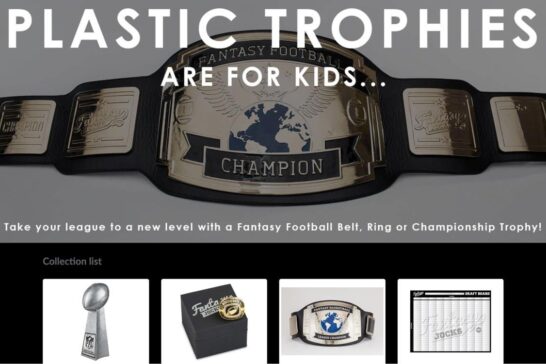Contrary to what you may have been led to believe, more web traffic does not equate to higher conversion rates. Sure, getting more visitors to your site does, theoretically, allow you to make more money. But not when the traffic focuses on quantity instead of quality.
If you look at real-world examples, you'll quickly see that low-quality traffic to your website poses several threats. For one, getting just anyone to your landing pages is a surefire way to waste precious marketing resources. Secondly, it could be hurting your SEO. And, perhaps most importantly, poor optimization practices always lead to low brand authority.
So what is it that you can do to turn high-volume web traffic into paying customers? Read on to find out.
Understanding Why Web Visitors Aren't Converting
The first step towards converting more of your web traffic into paying customers is to do an in-depth analysis of your website. But don't just look at conversion and bounce rates. Those are just the symptoms of a poorly optimized site.
To fully understand what's stopping you from achieving your goals, you'll need to take a deep dive into everything going on on your business website.
Determine Traffic Quality
When it comes to web traffic, it's essential to understand that more does not always mean better. Sometimes, marketers target high-volume search terms thinking that these will get more people to their site. But they fail to recognize that ranking for those keywords without meeting user intent actually hurts their brand.
So, to effectively boost conversion rates, brands must first get their targeting right.
By properly identifying your target audience, then driving that audience to the correct landing pages, you'll see much better results than by going after sheer traffic volume.
Sure, you may not get the same amount of visitors. But, by playing your cards right, you'll minimize PPC costs and boost conversions, and send signals to Google that your landing pages are valuable resources related to your selected keywords.
A classic example of wasting funds on low-quality comes from Scoro and Atlassian. Both these brands have paid ads that target the keyword "wrike" (the name of a project management app).

But, where they fail is that they aren't clear about offering an alternative to Wrike. So, when a person clicks on their ad (because it has the highest bid for clicks), then sees the landing page, they're likely to leave, seeing how they didn't find the page they were looking for.
This way, Atlassian and Scoro aren't just losing money. They're also coming off as impostors, causing permanent damage to their otherwise great reputations.
Evaluate Design
The second most impactful contributor to conversion rates on your website is going to be the design.
We're not talking about templates or color palettes (though those have an impact as well). Rather, we're talking about the efficiency with which your web pages highlight high-value information, like unique value propositions and CTA buttons.
For example, if you happen to land on the LMNT Recharge product page, you'll immediately notice that it's fully optimized to drive conversions. The monochromatic look is broken up by a splash of color that the brand uses to drive consumers to select their preferred product and contrasting it with an attention-grabbing "Add to Cart" button.

Recognize Bad Copy
Another aspect of your landing pages preventing your visitors from turning into customers is poorly written copy.
When it comes to your website's text, you must understand that there's more to it than SEO and readability. It also needs to match your brand's voice and tone. And, more importantly, it needs to appeal to your target audience.
A classic example of missing an opportunity to convert because of bad copy comes from brands who focus on presenting features instead of benefits to their potential customers. But, instead of just listing product traits, they can achieve much better results by describing how those products affect the buyer.
If you check out Altra's product page for the Lone Peak shoe, you'll see how each product characteristic is described in a way that gives the buyer better insight into what it does. Instead of just saying that the product has a "Balanced cushioning platform," it describes how it places the forefoot and heel at the same distance from the ground to minimize impact when running on trails.

Identify Trust Issues
One of the most common reasons for poor conversion rates on a website (even despite heavy traffic) is the lack of consumer trust. That's right – consumers tend to have a hard time believing brands.
Fortunately, however, there's a lot you can do in this regard.
For example, did you know that 93% of consumers say that online reviews have an impact on their purchasing decisions? Or that 67% of consumers check a brand's returns policy before buying a product?
With this in mind, it's clear that winning consumer trust is one of the key contributors to converting web traffic into conversions. And, luckily enough, it's not too difficult to do.
If you check out this page from Transparent Labs, you'll see how effectively the brand addresses trust on its product pages. Not only does it display the average star rating and the number of reviews, but it also has a "Science backed claims" button that leads to published medical studies that show how each ingredient impacts workout performance.

Or, if that doesn't seem like something you can apply to your site, consider writing an extensive about section, adding videos to your product pages, or even just bumping up the quality of your product images. All of these can have a significant impact. And, seeing how they're not too difficult to implement, you can even combine methods for outstanding results.
Test for Speed
Did you know that site loading speed directly impacts conversion rates? According to most online resources, the ideal page load time for websites is between 1 to 2 seconds, with each one-second increase negatively affecting conversion rates.
Moreover, it's important to know how your audience browses the web. Are they making searches from a desktop computer? Or are they, more likely, browsing from mobile devices?
Technical website performance characteristics account for your conversion rates, so don't forget to pay attention. Yes, they can be more difficult to optimize. But rest assured that every positive change is going to contribute to getting more customers.
Remove Friction
Finally, when assessing the aspects of your website that are preventing you from converting traffic into customers, consider whether any elements are causing friction for buyers.
Sometimes, the lack of free shipping could be stopping people from buying from a brand. Or you might not offer people's preferred payment method.
It is also possible that your website isn't properly designed to drive conversions. Are you improperly directing user attention? For example, if you take a look at the Real Thread homepage, you'll see that it has a beautiful design. However, it has four CTA buttons (and a chatbot widget), which might potentially de-focus and confuse visitors.

Another example of a design element that's supposed to improve performance but often ends up hindering it comes in the form of annoying popups. Yes, they can be a great way of encouraging web visitors to buy, like in the example below from MMORE.

But, invasive elements can also cause frustration, especially when they hinder an otherwise seamless user experience.
Fixing the Issues & Making Data-Based Decisions
Once you've identified the aspects of your website that might be preventing conversions, it's time to start fixing the issues.
For the absolute best results, identify changes that need to be made immediately and those that can wait until you've collected some data first.
Page loading speed and audience targeting, for example, will surely fall into the first category. Seeing how these directly discourage potential customers from turning into paying clients, you want to address them as soon as possible.
However, fixing copy, driving trust, or making design adjustments may benefit from giving yourself some time. Ideally, you should make these changes one by one (unless you realize you need a complete redesign) so that you can track how each of them affects your conversion rates.
Final Thoughts
As you can see, there are many possible reasons your web traffic isn't resulting in sufficient conversions.
Most brands will discover that the reason for their website's low conversion rates lies in poor targeting practices or insufficient attention paid to landing page optimization.
But, you'll also find that encouraging people to convert doesn't have to be difficult. Sometimes, all it takes will be:
- a banner advertising free shipping and returns,
- a slight change to CTA button copy, or
- a simple integration that allows you to show off reviews.
So go for those small changes. Even if your conversion rates increase by a couple of percent, you'll still be making progress. And, in the long-term, that's what really matters for the success of your business. Sustainable growth, which helps you go from nothing to something, all the while ensuring your business is in the green.



